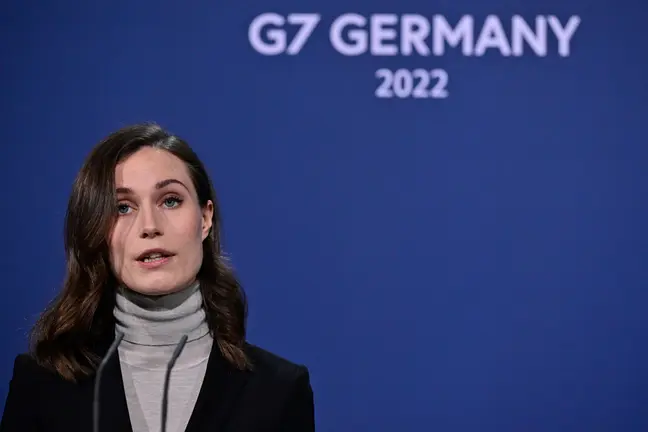The Finnish education system has achieved worldwide recognition in recent years. Either at the elementary school level or at the university, Finland devotes huge resources to training its population throughout their life and the results show that something is being done well.
The country appears regularly in top positions in he most prestigious educational rankings, such as PISA report. In the 2020 edition, the influential QS World University Ranking also included 9 Finnish universities among the 1,000 considered the best in the world.
Thousands of foreign students are attracted to Finland each year, even though the country has one of the most difficult languages to learn in the world. Fortunately, the number of degree programmes offered in English by Finnish universities is growing too.
Where lies the secret of the excellence of Finnish education?
The Organisation for Economic Co-operation and Development (OECD) -the club that brings together the 36 most developed economies- published today its annual indicator publication Education at a Glance 2019, comparing education systems worldwide.
The report examines areas such as the level of education, participation in education, education and training costs, the provision of education and training, and the number and employment levels of higher education graduates in the 36 OECD member countries and some partner countries. The study identifies several facts that would contribute to explain the Finnish success in education.
1.- Increased expenditure per student
Expenditure per student in comprehensive school education, both for primary and lower secondary levels, increased in Finland at current prices from 2015 to 2016. Meanwhile, average spending per student decreased both in OECD and EU countries in primary schools and in OECD countries in lower secondary schools.
In 2016, spending per student also increased in other Nordic countries such as Sweden and Iceland and in Estonia. By contrast, in Norway, where the cost of education has long been among the highest in the OECD countries, expenditure per student in primary and lower secondary education decreased.
2.- Investment in students’ welfare
On average, Finland spends relatively more on students’ welfare services than other OECD countries. In addition to teaching, the services offered include healthcare and school meals. There is also school transport in pre-primary and primary schools under certain conditions. Education providers are obliged to provide these services to all students free of charge.
Among OECD countries, school meals in particular stand out. A nationwide free-of-charge school meal intended for all pre-primary, primary, lower secondary and upper secondary school pupils is only offered in Finland and Sweden.
Compared to other OECD countries, Finland invests significantly more in lower secondary school students and in students’ welfare services. Finland's spending per student was the third highest at lower secondary level (corresponding to years 7-9 in Finland) among the OECD countries with data available.

3.- Higher expenditure as a percentage of GDP
Education expenditure accounted for 5.5% of Finland’s gross domestic product (GDP) in 2016. The share was higher than the OECD and EU23 average.
According to Education at a Glance, countries invest in education because it is seen to help promote economic growth, enhance productivity, contribute to personal and social development and reduce social inequality, among other reasons. Among OECD countries, education is valued differently and the financial resources invested in it vary.
4.- Early education investment
Children’s enrollment in early childhood education and care has increased in Finland. In 2017, the proportion of children aged 3-5 who participated in early childhood education and care had already reached 79%. However, according to the available figures, one in five 3-5 year-old remained outside early childhood education and care.
In this regard, Finland significantly differs from the other Nordic countries, where participation rates vary from 94% to 98%. Finland is also below the OECD average of 87%.
Still, in Finland -as in all the Nordic countries-, investment in early childhood education and care is at a high level in the global rankings, whether viewed from the perspective of expenditure per child or as a percentage of GDP. Early childhood education and care expenditure accounts for 0.8% of GDP in OECD countries. In the Nordic countries, it ranges from 1.2% in Finland to 2% in Norway.
5.- Less young outside work or education
In Finland, the proportion of people neither employed nor in education or training (the so-called NEETs) among 20-24 year-old fell to 14.2% in 2018 from 17% in 2017.
As a result of this decrease, Finland was below the OECD and EU averages in the NEET figures.
6.- More international university students
In 2017 there were 5.3 million people worldwide studying abroad for a tertiary degree. The majority of them, 3.7 million, studied in OECD countries.
The OECD explains there are many factors behind this: knowledge-based economies need skilled labour, not all national systems are able to meet the demand for education, and studying abroad offers an opportunity to get a good education and find employment.
In Finland, the Vision of Higher Education and Research for 2030 also emphasises international access to higher education and the global attractiveness of higher education.
In 2017, international students represented 8% of Finnish tertiary students, a figure above the OECD average (6%). However, international students account for 9% of students in the 23 EU countries which are OECD members, a slightly higher share than in Finland. The language may be one of the explanations to that.
Among Finland’s neighbours, Denmark has a higher proportion of international students (11%), followed by 8% in Estonia, 7% in Sweden and 3% in Norway.

7.- University admission very restricted in all fields
In around half of the OECD countries, candidates apply for admission directly to higher education institutions; whereas in the other half, applications are submitted through a centralised system.
Less than half of the systems are selective in the same way as in Finland, where admissions are restricted for all fields of study and all higher education institutions.
In Finland few applicants are admitted. The selection is usually based either on an upper secondary final examination or on university entrance tests. Other criteria, such as the average grade of the applicant’s upper secondary school certificate, the applicant’s interview, or work experience are often taken into account too.
There are major differences between countries as to the percentage of applicants admitted in a given year. In Finland, two thirds of applicants are left without a place in tertiary education every year. This is the highest rate of rejection among the reference countries.
8.- Higher graduation rate in tertiary education
In Finland, students start tertiary education later than on average in OECD countries and the proportion of students starting tertiary education in young cohorts is slightly lower than the OECD average. Due to these factors, the share of tertiary graduates in Finland is lower than the OECD average.
The average age of new entrants (to bachelor’s degree programmes) is 24 years in Finland, compared with the OECD average of 22 years. In the other Nordic countries, too, students enter tertiary education later than elsewhere. In Sweden and Denmark, the average entry age is 24 years, and in Norway 23 years.
However, the tertiary graduation rate in Finland is higher than the OECD average. In Finland, 43% of students completed a bachelor’s degree within the theoretical duration of the programme (the OECD average was 39%) and 73% completed a degree either within the theoretical duration period or during the following three years (the OECD average was 67%).
9.- Doctorates increase employment prospects
In Finland, 1.2% of the population aged 25-64 had a doctorate in 2017. This rate is slightly above the OECD average (1.1%). For comparison, in Switzerland 3.2% of the population completed a doctoral degree.
The employment benefit a doctorate brings varies between OECD countries. In Finland, it is 10% higher when compared to those with a master’s degree, whereas the OECD average is 5%.
Doctoral studies begin later in Finland than in other OECD countries on average. The median age of entrants to doctoral programmes is 31 years, whereas the OECD average is 29 years.
If you want to consult the full study Education at a Glance 2019 published by the OECD, you can access to it HERE










